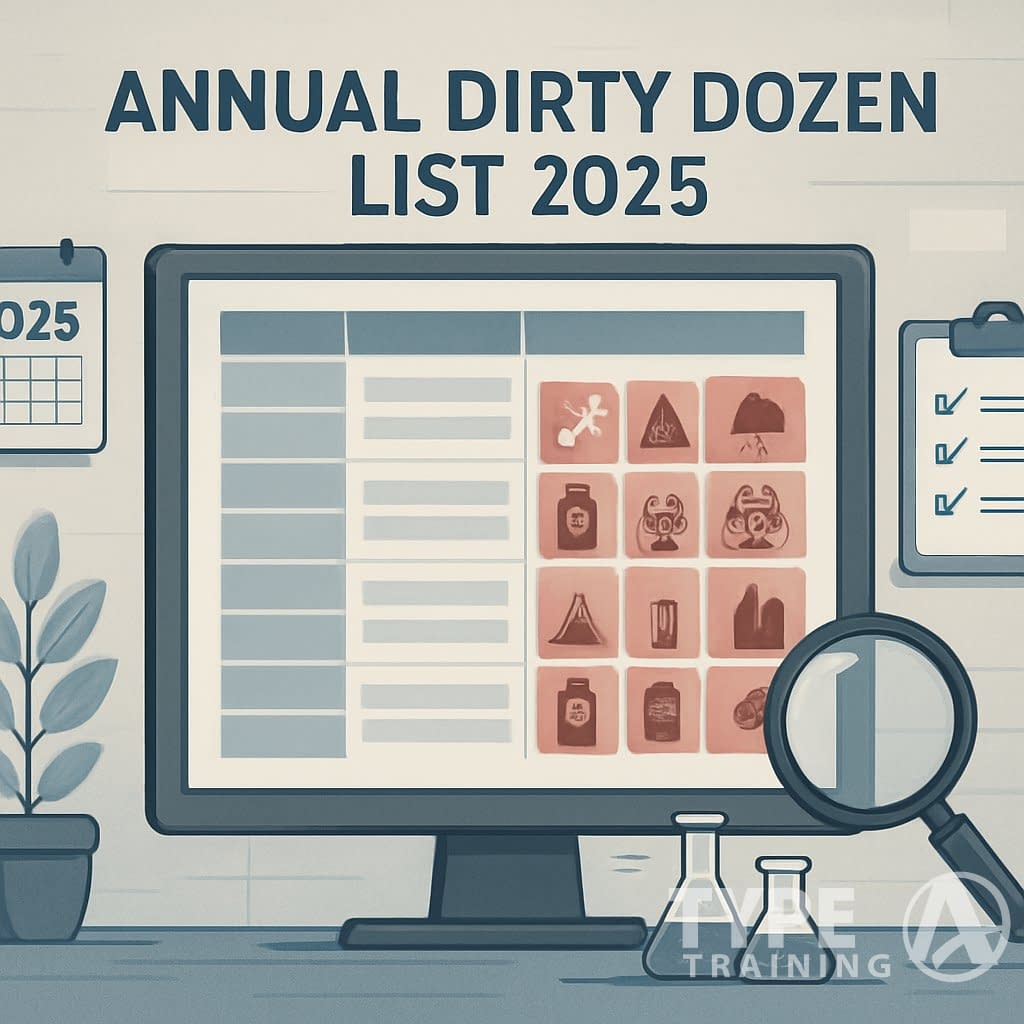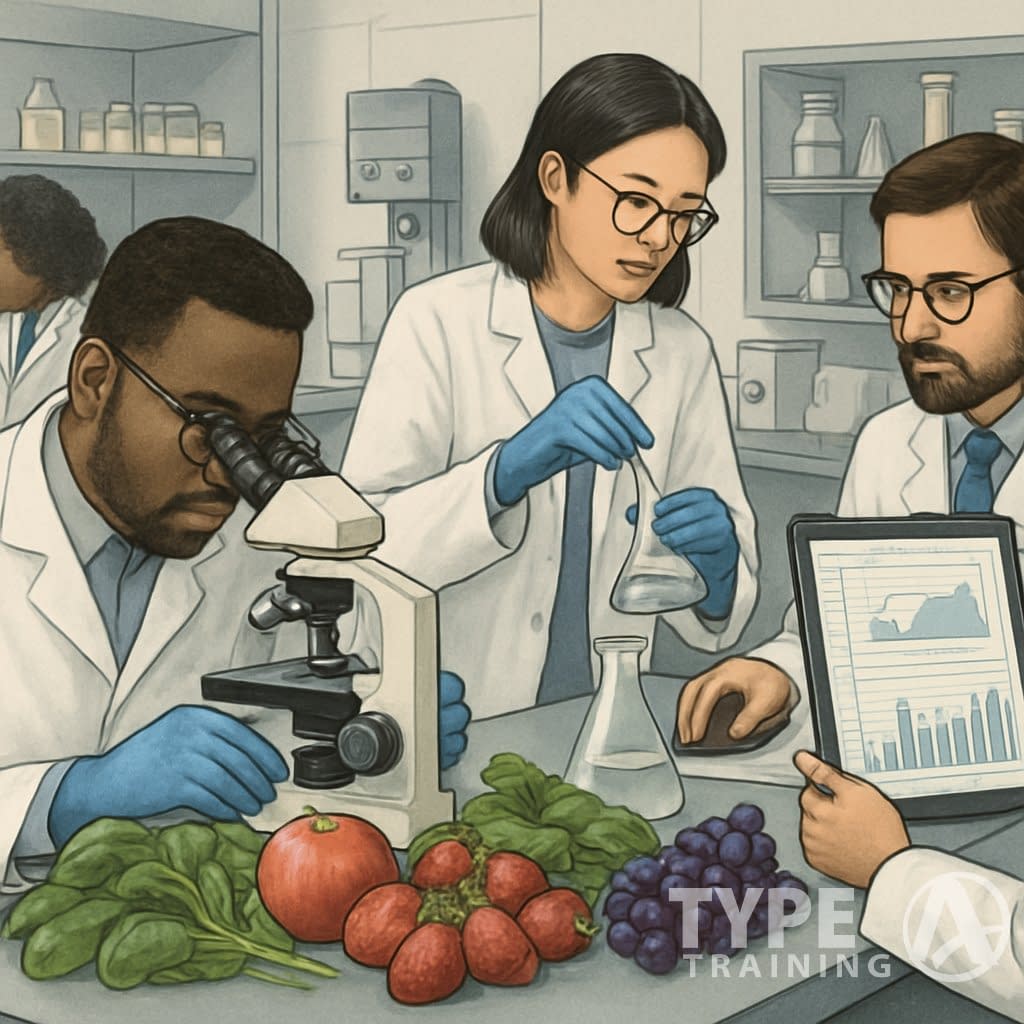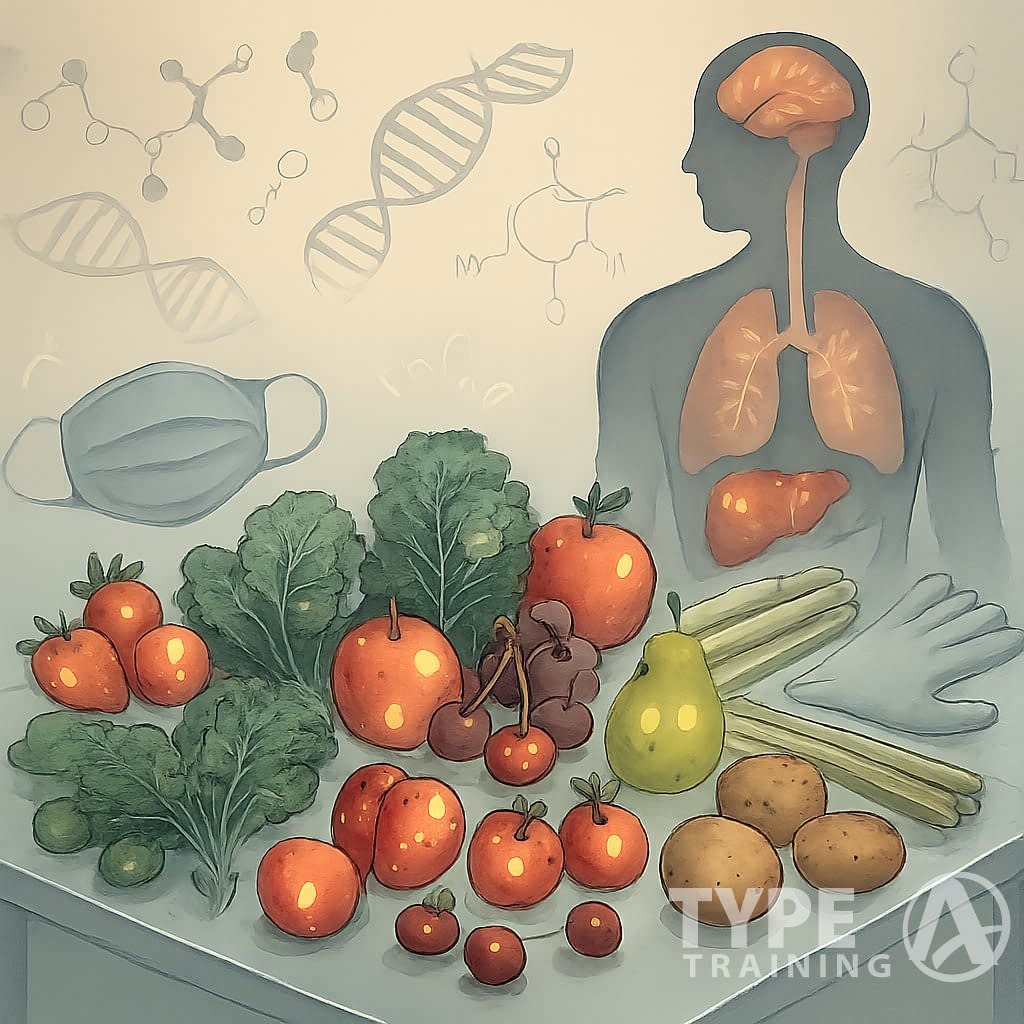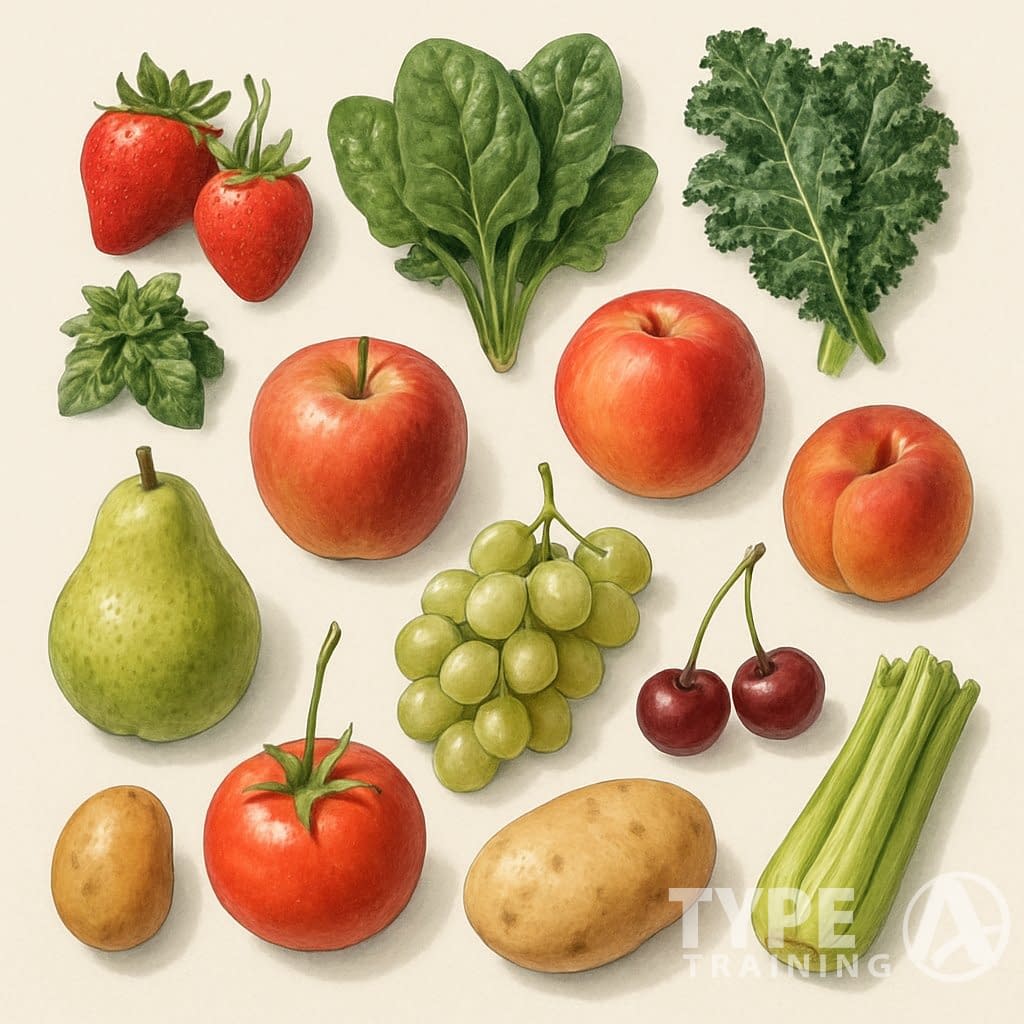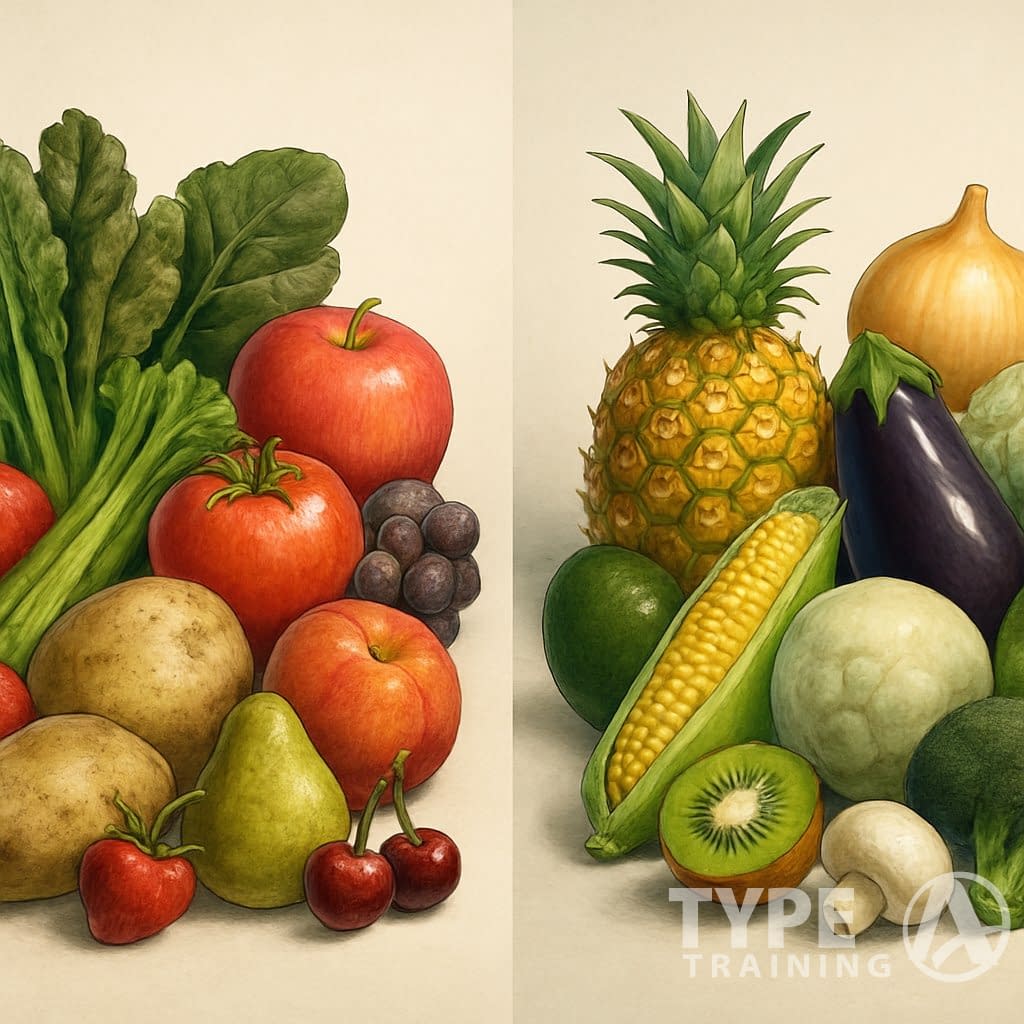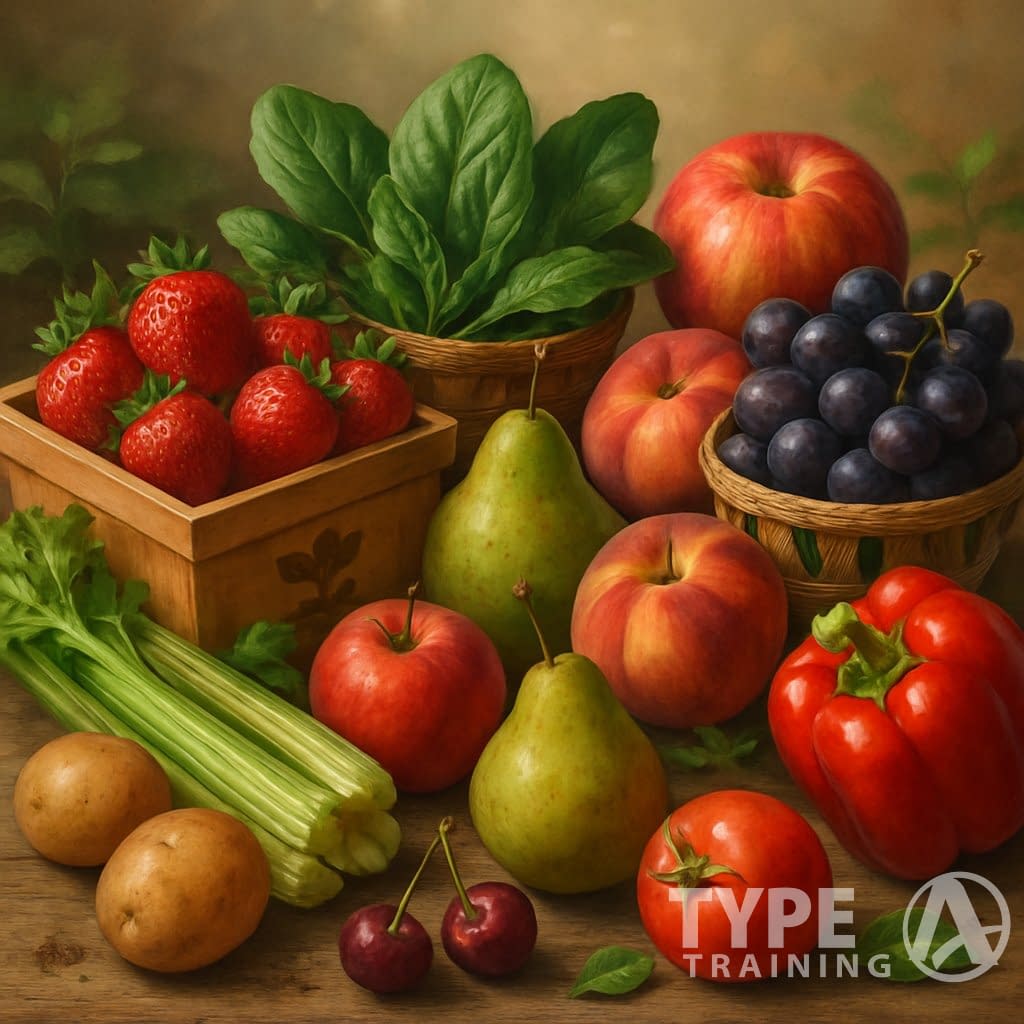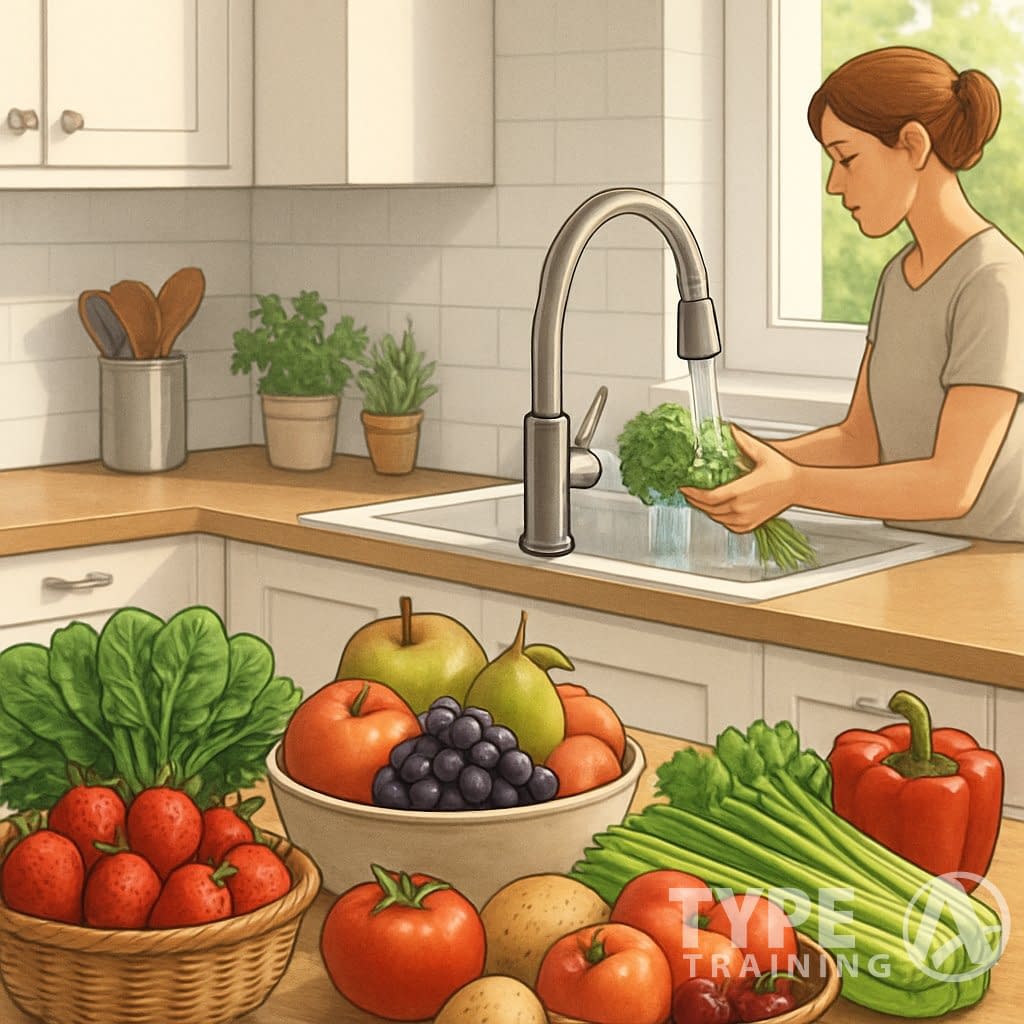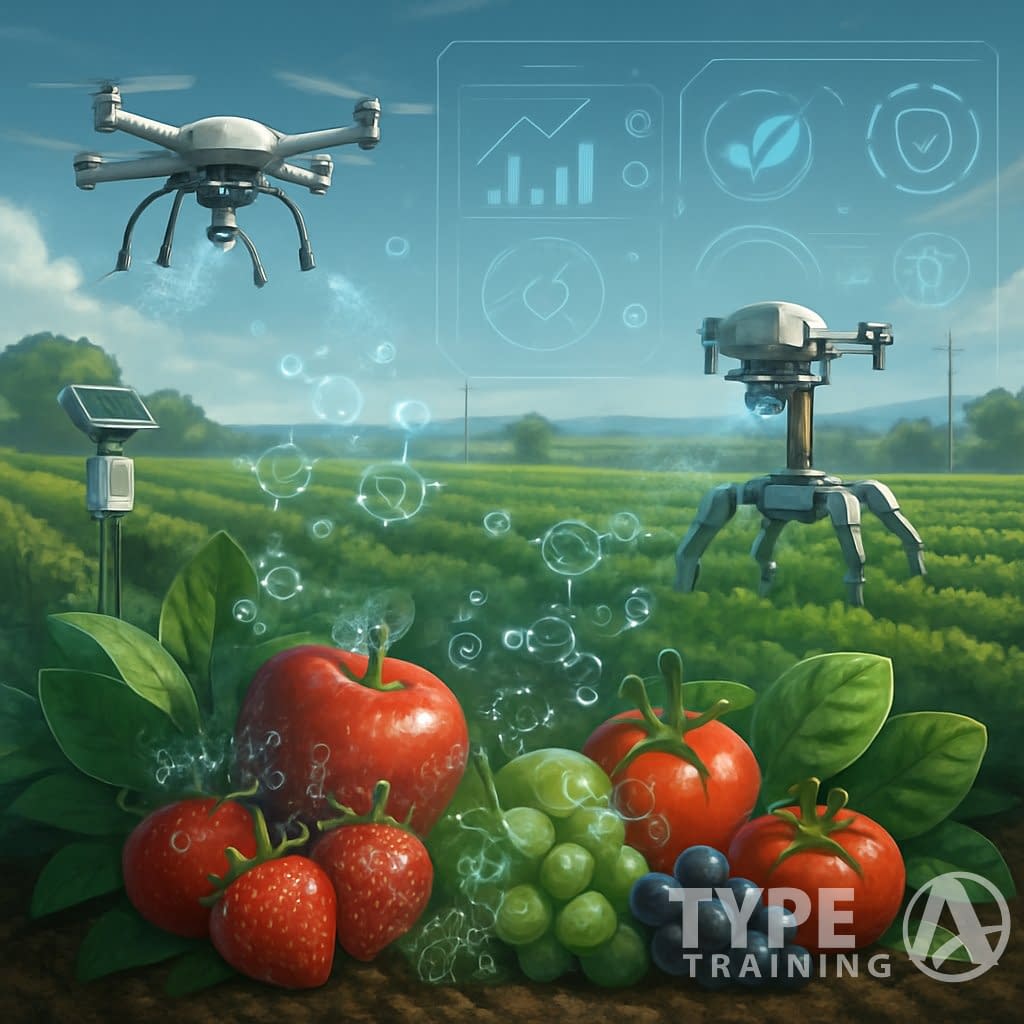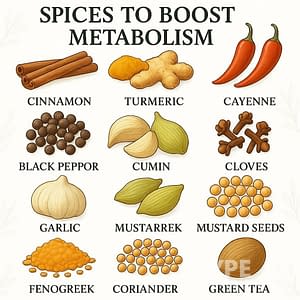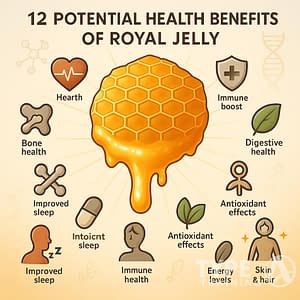The Dirty Dozen list for 2025 just dropped from the Environmental Working Group (EWG). It shows which fruits and veggies have the highest pesticide residues.
This yearly guide helps you figure out when it might be worth paying extra for organic produce. The 2025 Dirty Dozen includes 12 fruits and veggies with worrisome pesticide levels—spinach, strawberries, and grapes are all on it. Some samples had over 50 different pesticide residues.
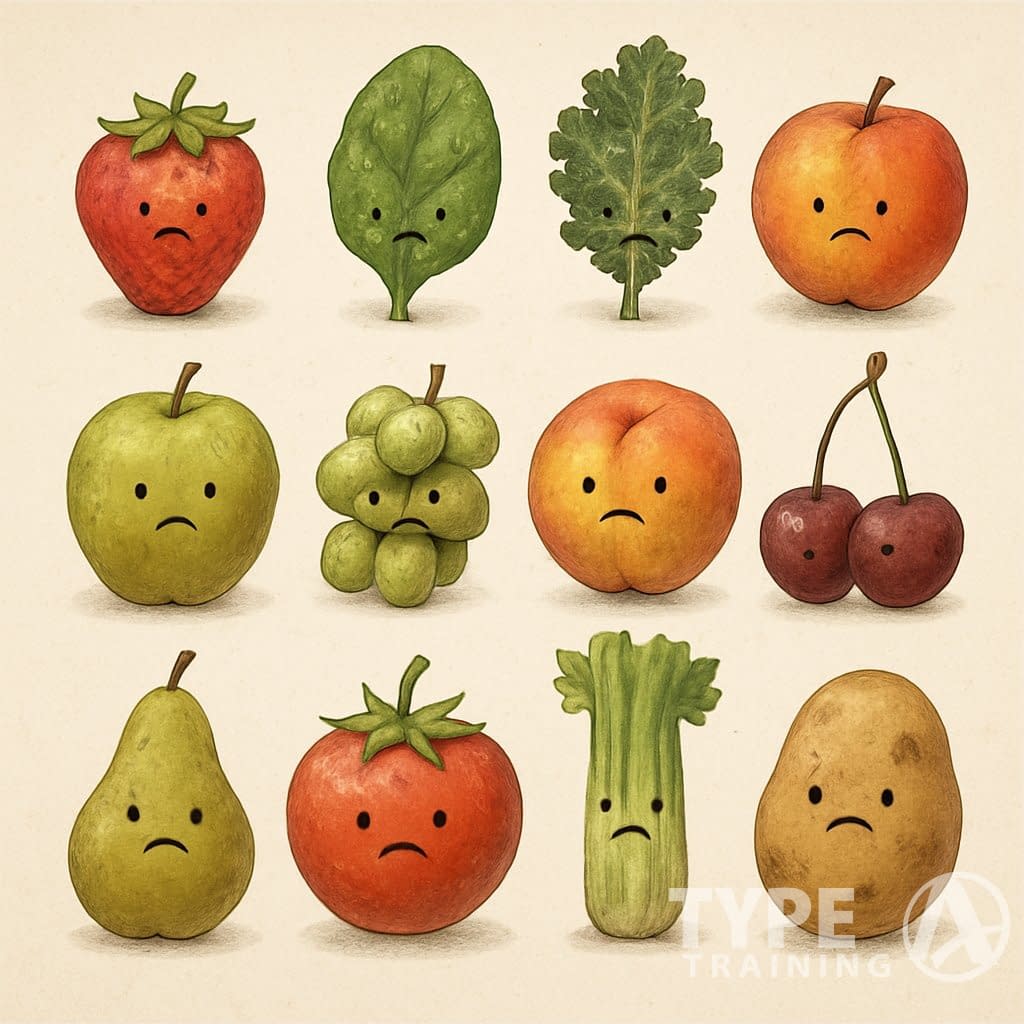
Knowing about the Dirty Dozen can help you decide how to spend your grocery budget. The list comes from USDA testing, where they check thousands of washed and prepared produce samples—just like you’d do at home.
Popular posts:
This year, blackberries joined the list. Pesticide use keeps shifting in conventional farming, so the lineup changes.
Key Takeaways
- The 2025 Dirty Dozen spotlights 12 produce items with the highest pesticide contamination. It can help you figure out when to go organic.
- EWG’s analysis found some produce had over 50 pesticides, and 96% of certain samples tested positive for residues.
- To cut down on pesticides, wash produce well, peel when you can, or grab items from the Clean Fifteen if organic isn’t an option.
What Is the Dirty Dozen List?
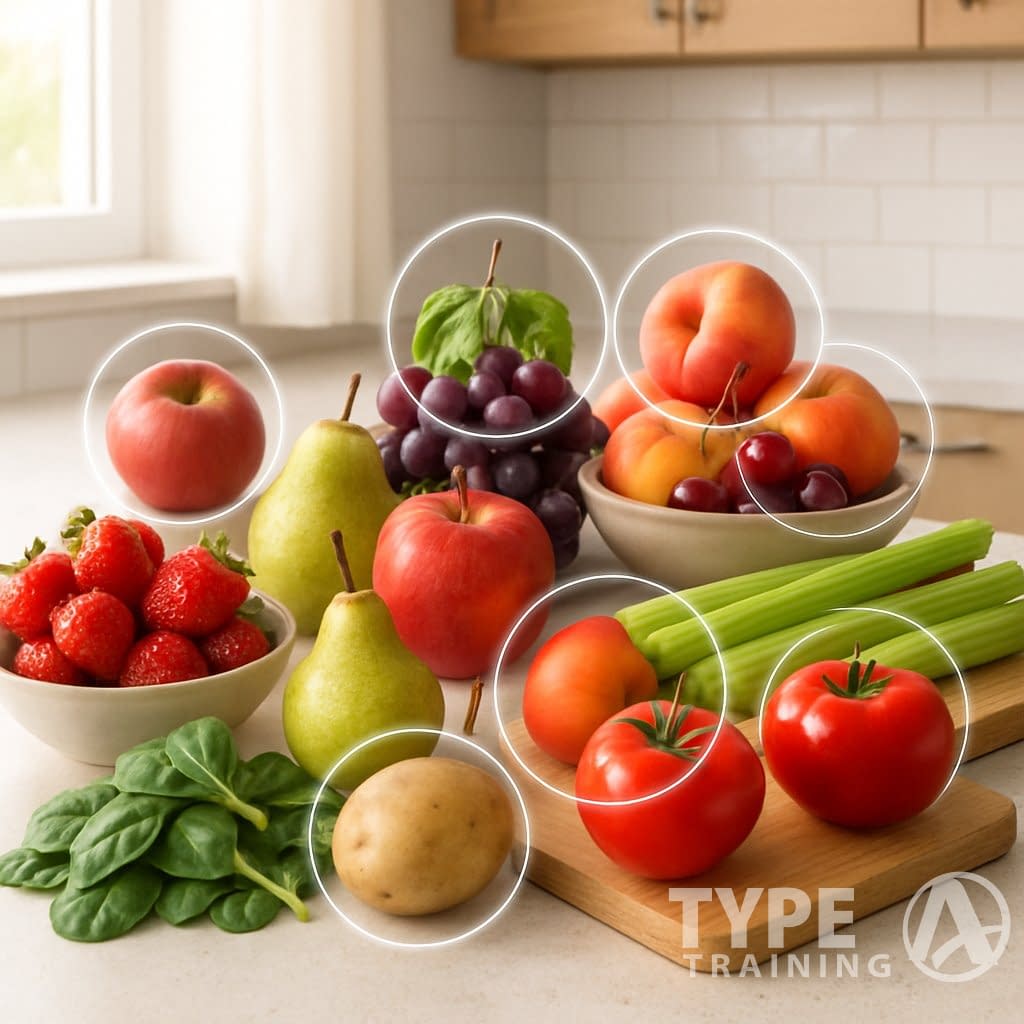
The Dirty Dozen singles out fruits and veggies with the most pesticide residues, based on USDA data. It gives you a quick way to decide when organic might be worth it.
Definition and History
The Dirty Dozen is a yearly list from the Environmental Working Group (EWG). It ranks the 12 produce items with the highest pesticide residues.
EWG started this in the ’90s, digging into USDA and FDA data. The lineup shifts as new testing comes in. In 2025, blackberries joined the list after the USDA tested them for the first time in 2023.
The Dirty Dozen is now a go-to resource for folks trying to lower their pesticide exposure while still eating plenty of fruits and veggies.
Purpose of the Dirty Dozen
The main goal? Help you dodge pesticides when buying produce. It’s a practical shopping tool for deciding when organic is worth the splurge.
The list doesn’t say you should skip these foods. It’s about making budget-conscious decisions when you can’t buy everything organic.
Nutritionists often say it helps you spend your grocery budget more wisely. The EWG knows organic can be pricey and tough to find for a lot of people.
How the List Is Compiled
EWG builds the Dirty Dozen by crunching the latest USDA and FDA pesticide data. They look at six main factors:
- How many samples had detectable pesticides
- The number of different pesticide residues found
- The average amount of pesticides detected
In 2025, strawberries and spinach stood out—96% of samples showed pesticide residues, and some had more than 50 different pesticides.
Some experts, including registered dietitians, point out that these are detectable, not necessarily dangerous, levels. The USDA keeps pesticide levels within legal safety limits.
Annual Dirty Dozen List: 2025
The EWG’s 2025 Dirty Dozen list is out, showing which fruits and veggies are most loaded with pesticides. Spinach snagged the top spot this year, bumping strawberries down a notch.
New to the list: Blackberries and potatoes
Two new faces showed up this year. Potatoes made the list, which is a little unsettling if you eat them often. Non-organic potato samples had residues from several pesticides.
Blackberries are another one to watch. They didn’t crack the top 12, but their contamination levels were high enough to raise eyebrows.
If you eat a lot of these, maybe reach for the organic versions. The new additions hint at shifting farming practices.
Most Contaminated Fruits
Fruit fans, heads up. Strawberries are #2 on the 2025 list. They’re still the worst fruit for pesticide residue.
Grapes, apples, cherries, peaches, pears, and nectarines also scored high for contamination.
Top Contaminated Fruits in 2025:
- Strawberries (#2 overall)
- Grapes
- Apples
- Cherries
- Peaches
- Pears
- Nectarines
If these fruits are staples for you, consider buying organic. Washing helps, but doesn’t get rid of everything.
Most Contaminated Vegetables
Leafy greens rule the veggie side of the 2025 Dirty Dozen. Spinach is #1 this year, pushing strawberries out of the top spot. Tests found high pesticide residue on conventional spinach.
Kale and mustard greens are still high on the list. These healthy greens carry a lot of pesticide residue when grown conventionally.
Most Contaminated Vegetables:
- Spinach (#1 overall)
- Kale
- Mustard greens
- Potatoes (new to list)
It’s frustrating, honestly, since these veggies are supposed to be so good for you. If you can, pick up the organic versions to get the benefits without the chemicals.
Notable Changes from Previous Years
The 2025 list looks pretty different from last year. Spinach jumped to #1, knocking strawberries down after several years at the top. That could mean more pesticides on spinach, or maybe just better detection.
Potatoes joining the list is a big deal, since they’re such a common food. Their appearance points to changes in how they’re grown.
Some items shifted spots but still look pretty concerning. The EWG says a lot of samples had multiple pesticide residues—sometimes a whole cocktail of chemicals.
How the Dirty Dozen Is Determined
The Dirty Dozen list comes from scientific testing and analysis. Researchers collect data, analyze residues, and work with government agencies and nonprofits to figure out which produce items are most contaminated.
Data Collection Methods
The Environmental Working Group (EWG) uses data from the USDA. Every year, the USDA tests thousands of produce samples from stores all over the country.
They wash and prep fruits and veggies just like you would at home. Some get peeled, some just rinsed, to show what you’d actually eat.
The tests cover 47 kinds of produce and look for a bunch of chemicals—insecticides, fungicides, herbicides, you name it. This broad sampling gives a solid picture of what’s out there.
Analysis of Pesticide Residues
Scientists hunt for specific compounds like fludioxonil, pyrimethanil, cypermethrin, DCPA, and chlorpropham. The tests pick up even tiny traces.
EWG ranks produce using six criteria:
- Percentage of samples with detectable pesticides
- Percentage with multiple pesticides
- Average number of pesticides found
- Average amount of pesticides
- Maximum number of pesticides on a single sample
- Total number of different pesticides found
Produce with the highest scores lands on the Dirty Dozen list. For 2025, strawberries, spinach, and kale are among the worst offenders.
Role of the USDA and EWG
The USDA’s Pesticide Data Program runs the initial tests. They’ve checked over 126,000 samples since 1991, building a massive database.
The EWG, an independent nonprofit, takes that data and turns it into something you can actually use. Their aim is to help you make smarter produce choices.
EWG doesn’t say these levels are unsafe. They’re just trying to help you lower your exposure to potentially risky chemicals if you want. Dietitians often remind us that eating fruits and veggies, organic or not, is still better than skipping them entirely.
The list gets updated every year as new data and farming trends come in. So, it’s always changing—just like what’s on your plate.
Health Implications of Pesticide Residues
Understanding how pesticide residues might affect your health helps you make smarter food choices. Let’s look at how these chemicals interact with your body, who’s most at risk, and what safety standards are in place.
Potential Human Health Effects
Pesticide residues on produce can cause different health effects, depending on how much and how often you’re exposed. Short bursts of high exposure might bring on nausea, dizziness, or skin irritation.
What’s more common is long-term, low-level exposure. This has been linked to issues like hormone disruption, developmental delays, and even some cancers.
Some pesticides mess with hormones by acting as endocrine disruptors. They can throw your hormonal systems off balance.
There’s also some research connecting pesticide exposure to neurological problems. Cognitive development issues and neurodegenerative diseases may be linked, though the science isn’t always crystal clear.
How risky is it for you, personally? That depends on things like:
- The specific pesticide
- How much residue is on the food
- How often you eat it
- Your own sensitivity
Vulnerable Populations
Kids are especially vulnerable to pesticides. Their bodies are still developing, and they eat and drink more for their size than adults do.
Pregnant women need to be extra careful, too. Pesticide exposure during pregnancy can affect fetal development, especially the brain and other sensitive organs.
Folks with weaker immune systems or certain genes might not detoxify pesticides as efficiently. That can make them more likely to experience negative effects.
Farm workers and people living near farms deal with much higher exposure. They come into contact with pesticides directly and through their environment.
Safe Limits and Food Safety
Regulatory agencies set Maximum Residue Limits (MRLs) for pesticides in food. These limits are designed to keep your exposure far below what’s considered risky.
Food testing programs check for compliance, but coverage isn’t the same everywhere. In the US, the FDA and USDA run these programs, and the EPA sets the rules for pesticide tolerances.
The Environmental Working Group says nearly 95% of their “Dirty Dozen” samples had detectable pesticide residues. But finding a residue doesn’t always mean it’s at a dangerous level.
Washing and peeling produce can help lower your exposure to surface pesticides. If you’re eating thin-skinned fruits like grapes, it’s especially smart to wash them well since their skins let pesticides soak in.
Dirty Dozen Fruits and Vegetables: In-Depth Profiles
The 2025 Dirty Dozen list highlights the fruits and vegetables with the most pesticide residues, based on USDA and FDA data. Knowing which produce lands on this list can help you shop with your health in mind.
Strawberries, Apples, and Grapes
Strawberries almost always top the Dirty Dozen. Tests show they carry more pesticide residues than most other fruits.
On average, Americans eat about eight pounds of fresh strawberries each year. That’s a lot, so it’s worth paying attention.
Apples also tend to test positive for several different pesticides. Their thin skin doesn’t do much to block chemicals, so pesticides can get inside the fruit.
If you buy conventional apples, wash them thoroughly. It won’t get rid of everything, but it helps.
Grapes, especially the imported ones, often have lots of different pesticide residues. Growers may treat them with 15 to 20 pesticides in a season.
Their thin skins and clustered growth make them magnets for pests—and for chemical sprays.
Shopping tip: If you can, buy organic strawberries, apples, and grapes to cut down on pesticide exposure.
Spinach, Kale, and Leafy Greens
Spinach actually tops the 2025 Dirty Dozen list, with more pesticide by weight than any other produce. Its broad leaves and low-to-the-ground growth mean it gets sprayed a lot and picks up chemicals from the soil.
Kale and collard greens often contain DCPA (Dacthal), which is considered a possible human carcinogen. Their big, textured leaves trap residue, so it’s tough to wash it all away.
Mustard greens and other leafy veggies get sprayed frequently to fight pests like aphids. Their quick growth means more chemical applications to keep bugs at bay.
Washing technique: Soak leafy greens in cold water with a splash of vinegar for 5 to 10 minutes, then rinse well. It helps get rid of some surface residue.
Cherries, Peaches, and Nectarines
Cherries often test positive for several pesticides. Their short season and pest problems mean farmers spray them a lot.
Sweet cherries usually get more sprays than tart ones. Peaches have fuzzy skin that can hang on to chemicals, and testing often finds residues from fungicides, insecticides, and growth regulators.
Orchards might treat peaches with 10 to 15 different pesticides every year. Nectarines have smooth skins, but that doesn’t make them safer—pesticides can still get through.
Even after washing, residues can linger. Preparation tip: Peeling these fruits helps reduce exposure, but you’ll miss out on nutrients in the skin.
Blueberries, Pears, and Potatoes
Blueberries recently joined the Dirty Dozen after tests revealed high pesticide levels. They’re prone to fungi and insects, so growers use multiple chemicals, including systemic pesticides that get inside the fruit.
Pears often show high residues, especially from fungicides. Their thin skin and juicy flesh make them targets for pests and chemical treatments.
Conventional pears can get 15 to 20 pesticide applications while growing. Potatoes, the most popular veggie in the U.S., also made the list.
They grow underground, so they’re exposed to soil fumigants and fungicides. Farmers also use sprout inhibitors during storage.
Alternative buying options:
- Check out local farmers’ markets for lower-spray produce
- Look for “pesticide-free” labels if organic isn’t an option
- Potatoes are easy to grow at home, if you’re up for it
Comparison: Dirty Dozen vs. Clean Fifteen
Knowing the difference between the Dirty Dozen and Clean Fifteen can really help you shop smarter, especially if you’re balancing health concerns with your budget.
Overview of the Clean Fifteen
The Clean Fifteen list, published each year by the Environmental Working Group, features fruits and veggies with the lowest pesticide residues. These are usually safe to buy conventional (non-organic).
The 2025 Clean Fifteen usually includes:
- Avocados – thick skins keep pesticides out
- Sweet corn – barely any detected residues
- Pineapple – tough rind protects the fruit
- Onions – don’t need much pesticide
- Papaya – naturally resists a lot of pests
Testing shows these foods are consistently low in pesticides. They’re a good bet if you want to save money and skip organic sometimes. Budget-friendly, too.
Key Differences Between Lists
The main difference? Pesticide content. The Dirty Dozen has the highest levels, while the Clean Fifteen has the lowest.
Testing methods: Both lists come from thousands of samples tested by the USDA and FDA. They prepare the produce just like you would at home—washed, peeled if needed.
Purpose: The Dirty Dozen helps you decide when to buy organic. The Clean Fifteen shows where you can safely stick to conventional.
Updates: These lists change every year, depending on the latest test results and farming practices.
Clean Fifteen foods usually have thick skins or are naturally pest-resistant. That keeps pesticide levels low.
Examples of Low-Residue Produce
Some Clean Fifteen fruits and veggies almost always have very little pesticide, making them safer to buy conventional:
Thick-skinned choices:
- Watermelon
- Honeydew melon
- Avocados
- Bananas
Vegetables that naturally resist pests:
- Cabbage
- Asparagus
- Sweet peas (frozen)
- Mushrooms
Other low-residue options:
- Kiwi
- Mangoes
- Sweet potatoes
- Cauliflower
These foods typically have fewer than four different pesticide residues, while Dirty Dozen items can have 10 to 20. You can feel pretty good about buying these conventional foods and still keep your chemical exposure low.
Organic Produce and Alternatives
If you’re worried about the Dirty Dozen, you’ve got options. There are ways to reduce pesticide exposure and still eat a healthy, colorful diet.
Benefits of Choosing Organic Options
Organic produce has some real perks if you’re worried about the Dirty Dozen. Organic farming skips synthetic pesticides, so fruits and veggies end up with fewer chemical residues.
According to recent studies, 96% of conventional samples from the Dirty Dozen list show pesticide residues. Organic versions have much lower levels.
Kale and spinach, for example, sometimes test positive for up to 23 different pesticides in just one sample. That’s… a lot.
Some research suggests organic produce might even pack a little more nutrition, with higher levels of certain antioxidants and beneficial compounds.
Going organic also supports farming that protects soil, water, and farmworker safety. It’s not just about you—it’s about the bigger picture.
Non-Organic vs. Organic Produce
The main difference between conventional and organic produce comes down to growing methods and chemical exposure. Non-organic samples from the Dirty Dozen usually have:
- Multiple pesticide residues (sometimes 13-23 different chemicals)
- Higher concentrations of synthetic chemicals
- More persistent pesticides that stick around even after washing
Even so, conventional produce is still nutritious—definitely better than skipping fruits and veggies altogether. The EWG suggests choosing organic for Dirty Dozen items, but feeling fine about conventional options for the “Clean 15,” which tend to have minimal pesticide residues.
Washing all produce thoroughly helps reduce (but doesn’t totally get rid of) surface residues on both organic and conventional items.
Addressing Availability and Cost
Let’s be honest: organic produce can get pricey, and that’s tough for a lot of families. To balance health and your wallet, try these:
- Prioritize organic for the “dirtiest” foods your family eats most
- Check out frozen organic—it’s often cheaper and just as good
- Look for seasonal organic, when prices usually drop
- Visit farmers markets—sometimes local organic is more affordable
If organic isn’t in the cards, wash conventional produce really well. Peeling off outer leaves of greens can cut down exposure, too.
CSA (Community Supported Agriculture) programs are worth a look—some offer affordable organic options straight from the farm.
Reducing Pesticide Exposure at Home
You can take practical steps in your kitchen to cut down on pesticides from fruits and veggies. Small changes in how you shop, clean, and prep produce can make a surprisingly big difference.
Washing and Preparing Produce
Washing your produce is your first line of defense against pesticide residue. Rinse fruits and veggies under cold or warm running water for at least 30 seconds, gently rubbing the surface.
Skip soap or commercial washes—they aren’t proven better than water and might leave their own residues behind.
For leafy greens, remove the outer leaves of things like cabbage and lettuce, where pesticides tend to linger. For broccoli and cauliflower, soak in cold water for a minute or two to help loosen hidden residues.
Use a clean veggie brush on firm produce like potatoes and carrots. After washing, dry everything with a clean towel or paper towel to remove a bit more residue.
Peeling and Cooking Methods
Peeling can seriously cut down pesticide exposure, especially with apples, peaches, and potatoes. Just remember, you’ll lose some nutrients and fiber that way.
Blanching veggies in boiling water for 30-60 seconds, then dunking them in ice water, can help remove surface residues.
Some cooking methods, like steaming, may break down certain pesticides while keeping nutrients intact. It’s not perfect, but it’s something.
Berries like strawberries and blackberries are tough to peel, so a thorough wash is extra important since these are often on the Dirty Dozen list.
Shopping Strategies
When you can, grab organic versions of the Dirty Dozen. That one swap can cut down on your synthetic pesticide intake.
Farmers’ markets are great for asking about growing practices directly. Some small farms use very little pesticide but aren’t certified organic.
Look for the Clean Fifteen when buying conventional. Nearly 60% of those tested show no detectable pesticide residues.
If you can, grow a few veggies yourself—even in pots. You get total control over what goes into your food, which is honestly pretty satisfying.
Seasonal shopping tip: In-season produce usually needs fewer pesticides and tastes fresher, too.
Future Trends in Pesticide Use and Food Safety
Consumer awareness is changing the whole landscape around pesticides and food safety. Testing keeps getting better, shoppers are shifting toward cleaner produce, and new rules are popping up to protect public health.
Improvements in Testing and Reporting
USDA and other agencies are rolling out more sensitive detection methods, able to spot even tiny amounts of pesticides on produce. These new technologies now pick up over 250 different pesticide compounds at levels we couldn’t even see before.
By 2026, real-time testing at ports could make it way harder for contaminated imports to slip through. That’s a win for everyone.
The EWG is also making its annual Dirty Dozen lists more user-friendly, with interactive apps that let you scan produce in stores to check pesticide rankings.
Scientists are even working on biomarkers to measure your actual pesticide exposure from food—moving beyond just testing what’s on the produce itself.
Shifts in Consumer Preferences
People’s choices are pushing the market in new directions. Since 2023, organic produce sales have jumped 15% each year, and more farmers are ditching pesticides.
Transparency is the new standard. Stores are starting to show detailed info about pesticide testing and residue levels, sometimes even with “pesticide tested” labels right next to nutrition facts.
CSA memberships have doubled in just two years, as more folks want a direct relationship with farmers and real answers about growing practices.
“Clean food” is quickly replacing “diet food” as the top concern for health-focused shoppers. More people are willing to pay extra for produce with fewer pesticide residues—and honestly, who can blame them?
Policy and Regulatory Changes
The FDA and EPA are tightening pesticide rules. They’re proposing to ban at least five pesticides that often show up on the Dirty Dozen list by 2027.
Recent studies have connected these chemicals to some concerning health effects. It makes you wonder why they weren’t banned sooner, honestly.
International trade deals now come with tougher standards for pesticide residues. Imported produce has to meet the same safety bar as what’s grown in the U.S.
Tax breaks for farmers moving toward lower-pesticide growing methods have grown. You might start spotting more “transitional organic” labels as this shift picks up.
Some states have rolled out stricter pesticide monitoring than the federal government. California, for example, tests twice as many produce samples as the USDA does across the country.
Public health campaigns are putting more focus on the benefits of eating produce—even if it’s not organic. Most experts still say the good outweighs the bad when it comes to fruits and veggies, pesticides or not.

